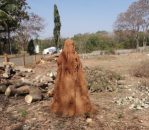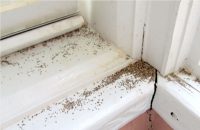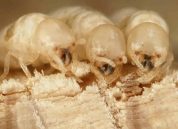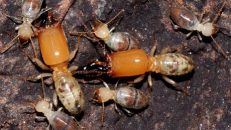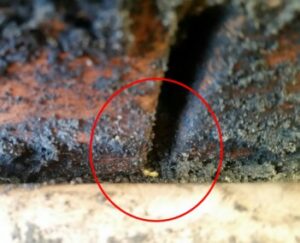
An example of an entry point
Termites can cause a lot of damage in your home but also a lot of damage to your wallet. Repairs are often expensive and I’ve seen many cases of people having to part with their savings to fix the damage caused by these pests.
There’s multiple ways you can help prevent termites entering your home but having the knowledge of how they actually gain access is great for helping fortify your defences.
Different termites have different access points to your home, identifying the way they have entered the home will also be a key indicator as to where they could potentially be residing within your home.
What Attracts Termites To Your Home?
Like all life on Earth, they need some type of food source to survive, in this case it’s cellulose.
Cellulose is found all throughout the wood in your home so it makes it a prime spot to begin building a new nest and colony as it’s in near endless supply for them.
Wood is found throughout your whole home usually, from the basement right up to the attic.
Another attractive feature about your home is the protection, warmth and moisture that is provided throughout.

Lights are very attractive to termites
Light is also key, this draws many insects to your home during the darker evenings. A good method for helping combat this is by using an electric bug light outside each side of your home.
This type of light attracts bugs in the area and zaps them instantly, whilst it may not be the most humane method, it certainly is effective and you must always remember that insects when subjected to this light will die instantly.
Sealing up any cracks that you find around the outside your home is another preventative measure.
However, due to how tiny termites actually are, it can be a challenge to stop them entering your home and there’s different methods of entry for the different types of termites.
Drywood Termite Entry Points
This type, otherwise known as the home wrecker, is a nightmare for keeping out as they can access the home through pretty much any place as they do not need to be underground or too close to soil to begin nesting.
They often fly into the rafters of your home or barns on your property and create a hole in your wood then seal it behind them so it’s often hard to even notice the entry point into their nest.
They can get into your home through any small crack in your window or wood, be sure to check the gaps around your doors that lead outside as this is a common spot where gaps occur.
Closing these gaps with appropriate sealant will help prevent them entering your home.
Once they get into your home they will quickly burrow and seal off their newly found nest, getting right to work at producing eggs.
An entry method which people often don’t consider is new furniture, always check any new furniture before bringing it into your home as they can often be home to a colony. Especially when you are buying second hand through sites like craigslist.
Firewood piles are another method for them, people often stack firewood against the walls of their home so moving this a few metres away from your home can help prevent them causing damage to your walls.
You must ensure that you keep your outside walls in good condition, even more so if they are made from wood as this is a material that can be prone to weathering if it’s not treated properly and cracks are quick to appear.
Subterranean Termite Entry Points
These aren’t as common within the home but still are an absolute wrecking force once you get a large infestation.
Foraging is their primary method of collecting food so even if they don’t reside directly in your home they are still a threat due to their workers going out in search of cellulose.
If this is the type that are damaging your home then you are likely to see mud tubes in various places, often around windows and doors as these are likely to be their primary entry points.
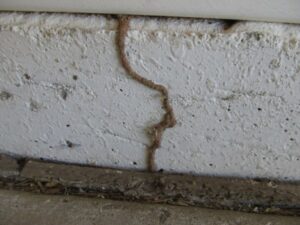
Mud tube on the outside wall
When searching for termites, you need to be on the look out for these tubes where your home is close to the ground as their nests are located deep in the soil.
It’s not unknown for them to find holes in bricks and mortar so its not only the wooden entry points you need to be wary of.
Also, they are known to build tunnels that are known as drop tubes.
They are exactly what you imagine, tubes that resemble stalactites and come from the ceiling of your home and allow the termites access to areas below.
Quite often, the subterranean species will come up through your basement which is another problem in itself as their nest may be directly under your home meaning it is more difficult for the pest control experts to get to work on removing the colony and thus it may take a little longer than usual.
Tackling entry points against this species involves ensuring that you don’t have any moist wood around your home, again moving fire wood away from your home to avoid them settling too close.
Drying out any moisture within your home is also essential as they absolutely love moist wood and will happily build a nest there.

